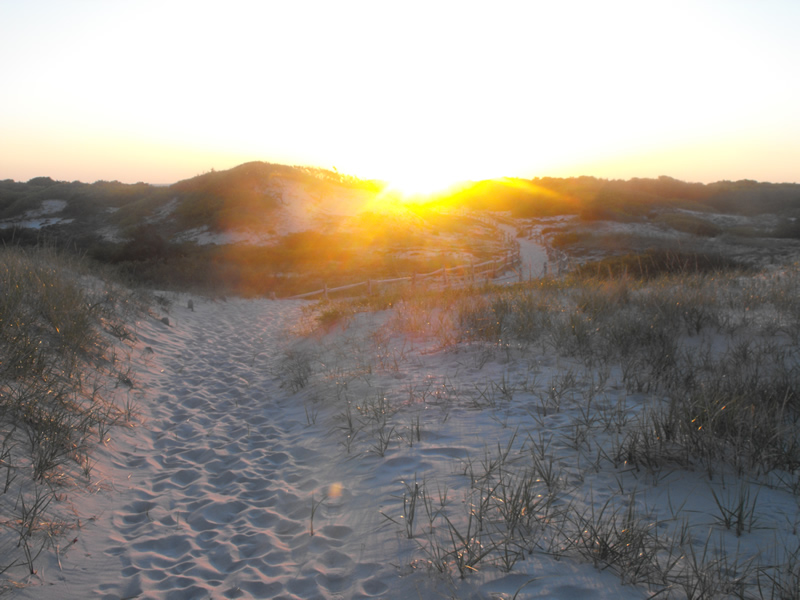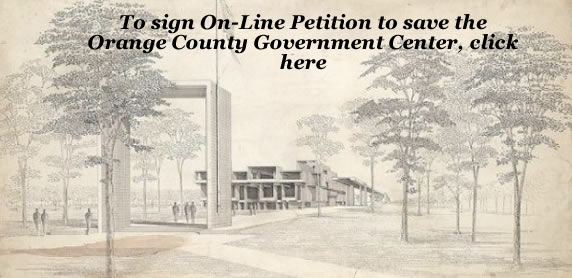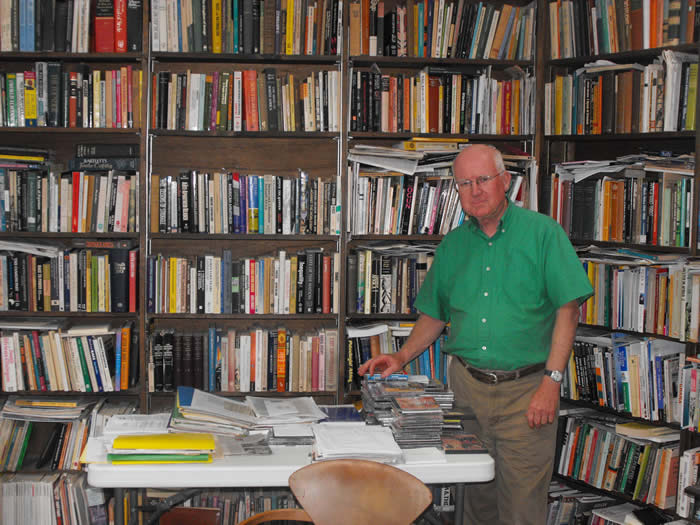FEATURING
Stories
Future of the Orange County Government Center
- Details
- Written by Nancy Hull Kearing with George L. Nitti Nancy Hull Kearing with George L. Nitti
- Category: Education Education
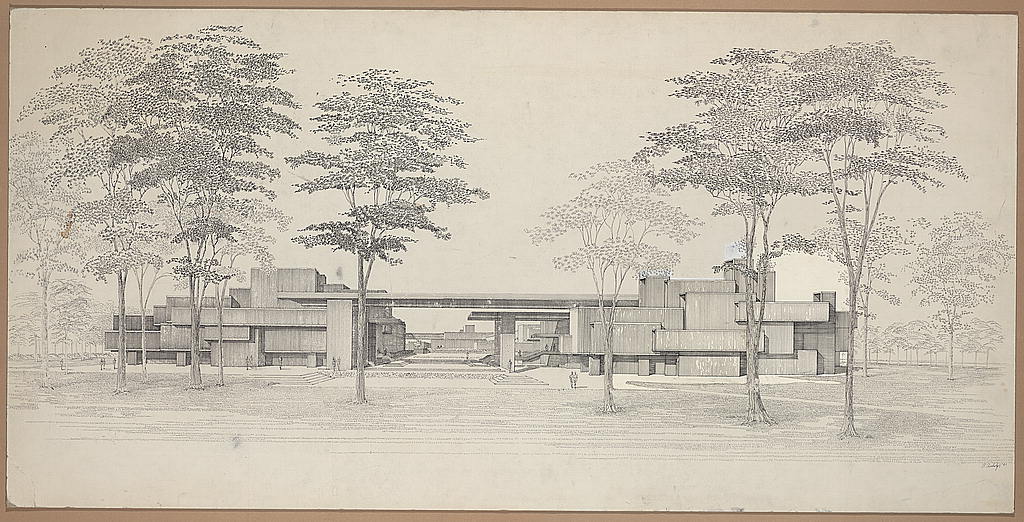
For some who are unfamiliar with the issue, or who have not yet delved deeper, Orange County has plans to "raze" the government center and replace it with a new one. (Click here to see story). Many of us have been to the center for one reason or another; one of the common complaints is that it is an "eyesore." And of course there is the issue of a building that has become run-down with leaky ceilings and broken door handles, a roof in disrepair, steps that are crumbling, poor lighting, inadequate handicapped accessibility, a building that is poorly insulated and conservationally behind the times.
Ed Diana, County Executive, is behind the idea of a new government center and laid forth his presentation (Click here to see presentation). On Oct. 7 a bond resolution for $200,000 passed the legislature authorizing preparation of plans for a new county building. The proposed new building will be $114.4 M based on a design concept; this proposal states that the Rudolph center and other office buildings will take $72.5 M to renovate.
Nancy Hull Kearing, a visual artist living in the County, is against the construction of a new center, and has been organizing her resources, putting forth a position against the demolition of the Orange County Government Center, believing that it is a County Landmark that needs to be preserved. Her perspective is as follows:
" The Government Center in Goshen gives us so much to celebrate and admire. Paul Rudolph, a famous architect of first importance designed the building in the Modernist style in the 1960’s. We ought to be proud to show it off along with other examples of grand architecture representing a mix of many different historical periods in Orange County.
I’m struck by how well the County building fits in, despite differences in shape and material, with the existing architecture in terms of scale and articulated, massed forms that express the various functions that take place inside. Look at the dormer windows in the historic buildings across Main Street and think of them as antecedent to the windows in the County building. Built in our time, it does not try to imitate another period, but is reminiscent in character of the good old rough, strong mid-19th century architecture in Orange County.
Although a large office building, the County building respects the traditional scale of the street. Main Street remains broad, ceremonial and elegant because the building is set back and is perfectly suited to the site.
The interior spaces located on different levels make movement between areas interesting. The interior feels more spacious and less confining than the standard linear office arrangement. Light enters the building in interesting ways. Rough, textured walls contrast with geometric volumes in the best 20th century Modernist tradition. Those rough concrete walls don’t require painting, nor does the exterior which is likely a huge budget saving. Concrete is the least expensive of permanent materials and is probably the most expensive to take down, a consideration in replacing the structure. Paul Rudolph designed the building to be added to. He understood that more space would be needed later on. We don’t need to replace the Center with a new glass and steel monstrosity. Using the latest technology, the existing structure can be made to serve our needs today.
The building has some problems. It is 40 years old and needs renovation and to be brought up to the sustainability standards we expect today. The leaks can be stopped if the County really wants to fix them.
Technology has changed and these issues can be corrected when the job is done properly. With some repairs and landscaping the Government Center could be a show place for the county that people want to come to see. It does have a place in the history of Orange County.
The Orange County Government Center is an important landmark by a famous architect. It is a rare and thoughtfully designed example of the Modernist period in American architecture and unique in Orange County. It should be celebrated and restored, not replaced.
Paul Goldberger, architecture critic from the New Yorker magazine replied to Nancy's concerns. Drawing on Rudolph's significance from that standpoint, he states: "It's not surprising that the opposition has been emboldened by a history of poor maintenance, which so often sets into motion a kind of vicious cycle, in which the building gets neglected, which leads more people to give up on it, which leads to more neglect, etc. etc. Reversing that kind of cycle is tough, especially when, like Rudolph's building, there is not much that is easy or soft and cuddly about it, and the cycles of fashion and taste aren't running in its favor.
But that makes your work all the more urgent. I hope you can get Robert Stern to explain the unusual history of the Rudolph building at Yale, which fell into such disfavor there was consideration of tearing it down, and now has been magnificently restored and even renamed in Rudolph's honor. You might also want to do some research on the complicated history of the Marin County Civic Center in San Rafael, California, by Frank Lloyd Wright, which I think has also had periods of major neglect and disfavor by the community, but which, thankfully, has been saved.
My new book "Why Architecture Matters" has a chapter entitled "Buildings and Time" that talks about cycles of taste, and about the importance of preservation at those difficult times when buildings are out of fashion. Perhaps it might provide some helpful arguments. To those who want to learn more about the work of Paul Rudolph, the following video provides a look at his significance.
Dr. Richard Hull, Warwick's Town Historian and Professor of History and Civilization at NYU, takes the perspective of saving the building from a historical viewpoint, writing Leigh Ivey of the National Trust for Historic Preservation. Hull asserts that the building needs to be saved and preserved based on the vital role historic buildings play in giving one a sense of identity and connection to their history. The mission of the National Trust for Historic Preservation is to prevent historic buildings and neighborhoods from being torn down or allowed to deteriorate. When that happens, "a part of our past disappears forever. We lose history that helps us know who we are, and we lose opportunities to live and work in the kinds of interesting and attractive surroundings that older buildings can provide."
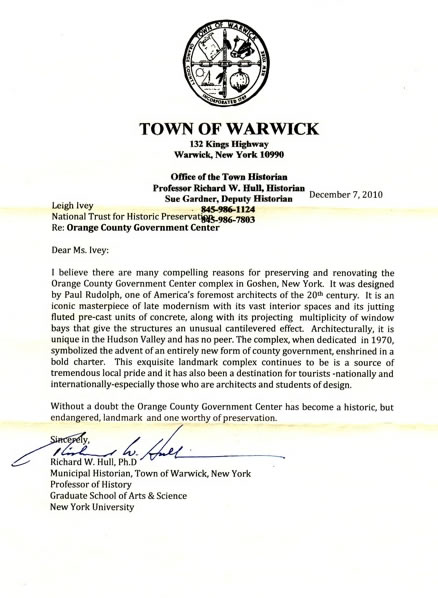
Robert A. Fromaget, who has a background in business Strategies and Budgets with IBM and who was an organizational consultant, is continuing to look at the economic perspective of the issue, bringing to light the crippling debt which it may incur upon Orange County Taxpayers.
In a letter to legislators, some local officials and the Democrat County Chairpersons, he writes about some of his concerns, pointing to County debt from 2006 to 2009. The two components that were discussed were government indebtedness and the exploding Post Retirement Benefits, costs that due to the reporting have been hidden for some time from the taxpayers. (Click here to view government documents)
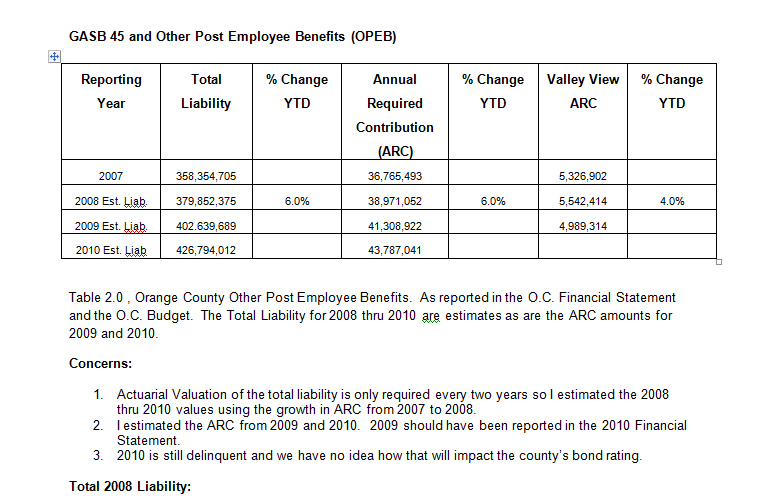
He writes: "I am sending this to you because I think you are in a position to communicate it to the people you represent in your districts. I am concerned after seeing the CBS Show 60 minutes this weekend. 60 Minutes had a segment concerning a number of issues that I have previously presented to you, including Post retirement benefits (OPEB) and debt burden liabilities that the taxpayers of New York are responsible for. (To view episode, click here). I am only providing you with the County level costs for these two liabilities and not the Federal, State, Town and Village costs. Also the data is only through 2008 since that is the only data that the county has made available to the public."
Another concern he has is that the County has not made available the Financial Statement for 2010. He writes, "The opening paragraph of the county’s web page states that the Official Statement contains the County’s financial statements, the projected use of the proceeds of the bond sale, and other facts deemed necessary to enable prospective investors to deem the creditworthiness of the County. This supports my concern that the reason for their delay is to conceal any impact on the County’s credit worthiness and thus their bond rating.
As the county presents more and more debt packages for your approval in the coming years and you approve them how can you possibly understand what it means to the taxpayers of this county? I again ask that you demand this county executive produce the document for 2010 before any more decisions are made concerning capital projects and more debt for the taxpayers.
For info about financial details write to Bob Fromaget This email address is being protected from spambots. You need JavaScript enabled to view it.">This email address is being protected from spambots. You need JavaScript enabled to view it. This e-mail address is being protected from spambots. You need JavaScript enabled to view it and visit www.orangecountynywatch.com, Bob Fromaget's newsletter.
For names, addresses, and parties of legislators, go to This email address is being protected from spambots. You need JavaScript enabled to view it.">This email address is being protected from spambots. You need JavaScript enabled to view it. This e-mail address is being protected from spambots. You need JavaScript enabled to view it.
For another article about this issue, click here.
To sign a petition,
Richard Hull: Man for all Seasons
- Details
- Written by George L. Nitti George L. Nitti
- Category: Education Education
“In order to be a whole person operating on many different levels you have to see how it all interrelates to your past. That’s what we need to impress on future generations.” Richard Hull
For Richard Hull, Warwick’s town historian and retired professor of African History and Civilization at NYU, his own words could not be more apt to describe the multifaceted person he’s become, one who has been shaped by his understanding of the past, both on a personal and global scale. Spending a couple of hours with him at his home in Sugarloaf, NY, situated on Applewood Orchards and Winery, I learned about a few of the defining moments in his life.
Exploring Creative Process with Plein Air Painters
- Details
- Written by George L. Nitti George L. Nitti
- Category: Art and Photography Art and Photography
In a hundred years, how will the world view your work? What will they see in that field you have rendered, the barn you have sketched, the poplar trees you have captured? And what will that tell them about their own world?
One Sunday in July, I spent half the day with the Wallkill River School Plein Air Painters, with the objective of looking at the creative process. My journey began with a camera, notepad and pen, tools that would help transform my ideas into something whole.
Painting at different locations throughout Orange County over the course of the summer, the painters converged at Keith Stewart’s organic farm in Greenville, NY. Flavia Bacarella, Keith’s wife and an artist, invited me to attend the workshop. I went with an open mind, not sure what to expect, nor what kind of outcome I would produce.

It had rained the previous day, so when I arrived to the farm, with over 100 varieties of fruits and vegetables, the land and its vegetation was perked up, looking lush and verdant. Many of the artists had already established a spot for themselves; there were easels and canvases propped up in every direction. I wrote in my notebook. There is something that attracts our eye to put us in our own very special spot.
 For the plein air painter, finding a spot is the starting point for creating. What is that something that attracts us to where we ultimately station ourselves? Is it a random, unconscious act or is it deliberated upon, our eye drawn to a theme or a point of interest or something that represents for us a novel interest in which we can add something new to our dimension of living?
For the plein air painter, finding a spot is the starting point for creating. What is that something that attracts us to where we ultimately station ourselves? Is it a random, unconscious act or is it deliberated upon, our eye drawn to a theme or a point of interest or something that represents for us a novel interest in which we can add something new to our dimension of living?
One of my goals was to spend a little time with the artists and watch the development of their work. I added more notes in my book. Somehow we begin with our ideas and we take those ideas and nurture them. It’s really a very simple process amidst a complex act that requires skill, experience and the desire to see it through.
My other intention for the day was to write a couple of poems, inspired by my own observation. I did not know when these poems would reveal themselves to me, but I had faith they would.
I further wrote in my journal: The field does not grow abundant fruit and vegetables without the guiding hand of someone to make it happen. To me, this is what it means to cultivate. It means to shape, to nurture, to help bring into existence an idea with potential and raise it into its fullest manifestation. Time is always a factor in the unfolding of events.
I somehow had to become present – to be still when I needed to be still and to move when I needed to move. What is that force that guides us? Is it something Taoist, when you are out in nature under these circumstances and you are moved like the stream is moved, like the wind that blows across your face from nowhere? Creation certainly must account for the ebb and flow of natural occurrences.
 At first I observed a demonstration in technique, with the speaker discussing her plein air painting which was set on an easel facing the landscape she had been working on. I put my head down and listened while taking notes. What you might have heard would include advice on capturing the landscaped elements such as the far off hills, the clouds, the contours of a ridge, the horizon, rocks, etc. And some advice about taking liberties with your view. The instructor said, “Give it a thin layer now and then get the details later.” She had been working on the painting earlier, so it was near completion. She gave us an example of adding some final details. How true it is that our creative acts allow for the addition of details. As you have layered and layered, those new details become layers for newer additions.
At first I observed a demonstration in technique, with the speaker discussing her plein air painting which was set on an easel facing the landscape she had been working on. I put my head down and listened while taking notes. What you might have heard would include advice on capturing the landscaped elements such as the far off hills, the clouds, the contours of a ridge, the horizon, rocks, etc. And some advice about taking liberties with your view. The instructor said, “Give it a thin layer now and then get the details later.” She had been working on the painting earlier, so it was near completion. She gave us an example of adding some final details. How true it is that our creative acts allow for the addition of details. As you have layered and layered, those new details become layers for newer additions.
Then my first poem revealed itself. I was looking at a close-up of a field of buckwheat, mesmerized by the robust activity of bees, which were producing this murmuring din that was enchanting to listen to. I sat there for twenty minutes, looking intensively at my subject matter, as I knew I needed to capture details.

However, I did get stuck after twenty minutes. Later on, Lynwa, one of the artists, informed me that when she got stuck, she moved around and checked out what other artists were doing. "Take a break," she said and "look at other things." She was working on a watercolor, finding plein air painting a challenge because of how quickly her watercolors were drying.

I did not like the discipline of imposing a time limit on my artistic act anyway. I knew that I was here for other reasons and that writing a poem was only part of my larger objective. I would have to get back to the poem later. Yet I knew one thing: I was committed to writing it. The seed was planted. The poem was ready to be written. It would just be a matter of time. First I needed to move around and get other perspectives. Ah, I was in the spirit of creating.
After the group instruction was over, the artists returned to their easels'. As I met with several of them, I realized that each artist arrives at an end point through their own means. For me, getting to the end, in part, is a matter of will – yet at its core, has a seed that’s already been planted, one that sprouts and grows with each step, one that develops, one that matures, only when cultivated through some kind of process. That's what I call creativity.
The several plein air painters that I spoke to helped inform the creative process and inspired me along my own personal journey to have a meaningful experience en plein air, one in which I would become a creator myself. And as such, I realized I was the one responsible for shaping it into a meaningful event.
George Hayes, one of the first artists I spoke to, was working on a value sketch that provided him with an outline that would help guide him through his process. He told me he spends about ten to fifteen minutes working on it before he even begins to draw with his pastels.
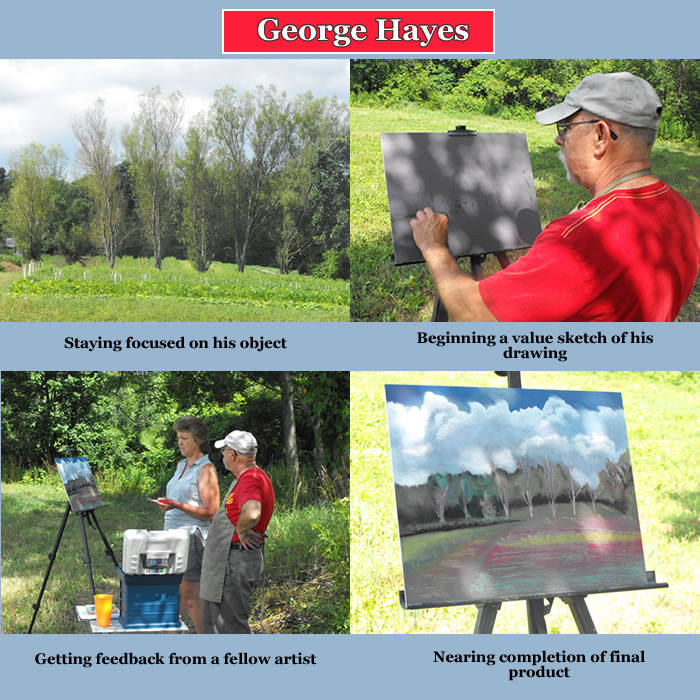
Daniel Grant, by contrast, who works in oils and learned to use a chromatic palette at the Ridgewood Art Institute, told me that he begins with one detail and works around it, adding the dark and light colors as he goes along, working without a plan per se, such as a value sketch. Yet he achieves the same result – a finished painting.
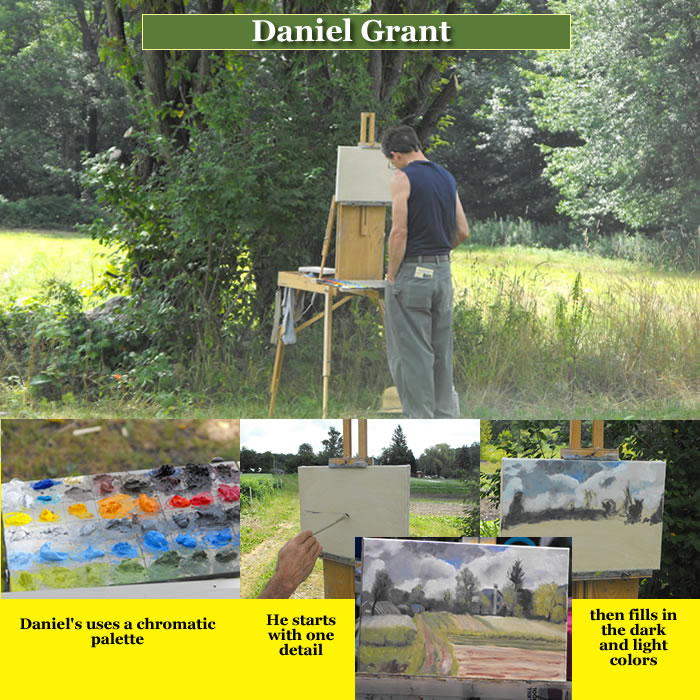
Gloria Detore–Mackie, who also works in pastels, was comfortable manipulating reality, counterintuitive to some who aim to capture exactly what is there. The question of when and how to fabricate reality is one of the keys to creating art.
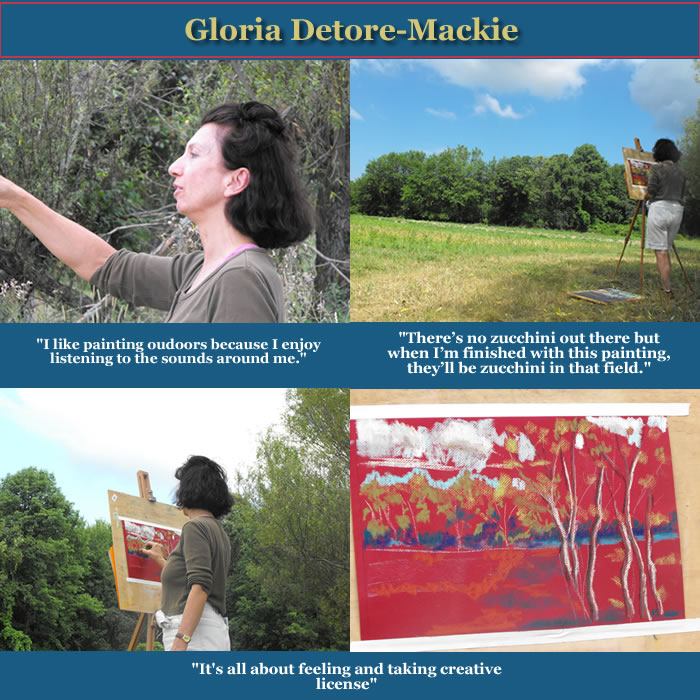
My conversation with Gloria inspired my second poem, which drew on the sounds I experienced with her during the moments we spent together.
Sans the Sound
Chirping birds, motoring cars, whirring bees, rustling grass, stomping boot, shuffling
feet, thudding branch, and breath of air from chalky dust of pastels brushed with hand –
these are the sounds unfolding to my ear.
I wish I could record and playback what I hear
while you look at my finished landscape.
Through these reds, whites and olive greens
That forged the trees and clouds beyond,
sans the sound
somehow this painting seems incomplete.
Shawn Dell Joyce, founding member of the Wallkill River School, talked to me about her process of working with theme while seeing landscape as allegory.
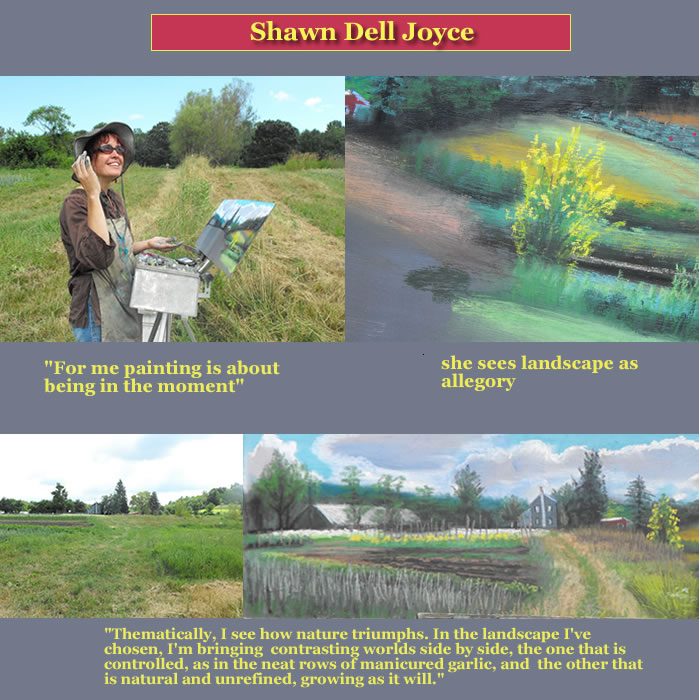
When I approached Pam Rice, she was just finishing up her painting. I did not say much to her, but merely admired how accurately she had rendered the shape of the barn in only two short hours.
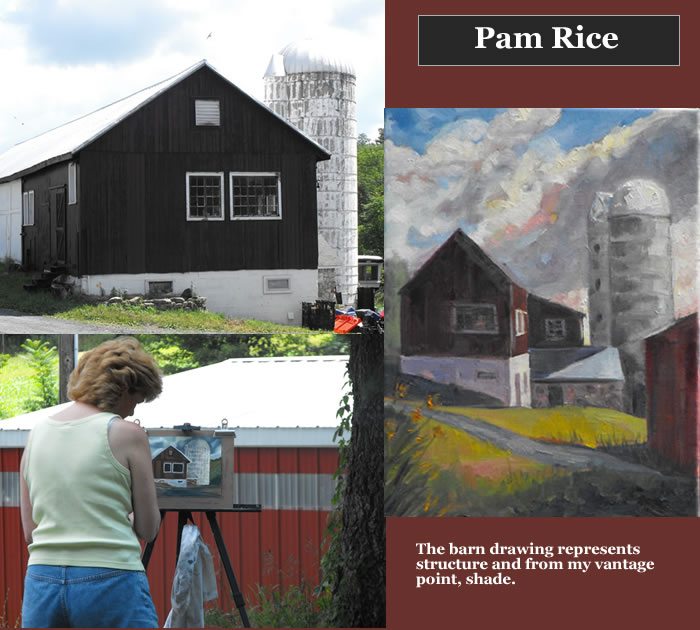
As the time was winding down, I visited Flavia to see how she was doing with her painting. I discovered she was working on an impressionistic rendering of the field of buckwheat, almost from the same view I was looking at the field - a close-up shot - and I got another bit of inspiration. She told me that art was a psychological battle for her and that the creative process involved some degree of suffering. Looking at my own process, especially my poem, "The Field of Buckwheat," I understood her creative struggle to come to resolution. It was so hard for me too.

At the end of the two hours, all of the artists were brought together to share their work over lunch. It was interesting to see the diversity of art, in style, form and medium. Shooting more pictures, not really knowing how I was going to use my material, I trusted everything was going to come together.
It wasn’t until I got home and sat with my project for several weeks before I attempted to make sense of my experience. The poem, however, was finished, as I was eager to get it done when I got home. But in truth, the poem was never really finished, because through each reading, I found something to change, add or delete. Everything I used – the poem, the pictures, the scrawled notes I had taken quoting various artists – everything that I had put down in my little notebook could become a valuable source for developing ideas.
Although I was invited by Shawn to partake in another week of Plein Air Painting and to take up painting myself, I knew I didn't have the time this month. My day out with the Plein Air Painters was more than just a half day event though. It was a multi-layered process in which I would continue to add more detail over time.
My end game was to write this story. But first I wanted to have a meaningful experience. It took me several weeks, and now that I look back over my creation, I feel I've accomplished that. The poems are finished and I'm more attuned to the creative process. It's a continual unfolding. And when I put down my pen, even then, the act of creation continues to pursue me to some new destination.
Loretta Hagen: Featured Performer
- Details
- Written by George L. Nitti George L. Nitti
- Category: Music Music

Loretta Hagen has been writing and performing music that earns rave reviews for her rich vocals and poignant songwriting. With a style that mixes fold, country and rock genres, she has performed at venues such as Music at the Mission, Outpost in the Burs, The Mainstage, Minstrel Coffee House, Mayo Center for the Performing Arts, Lycian Centre, Groovin'In New Fairfield, Listen Live Music, Black Potatoe Festival, Falcon Ridge FolK Festival, Musikfest and many more, sharing the stage with national artists including Roger McGuinn, Steve Forbert, John Gorka, Jonathan Edwards, Johnny Winter, Ellis Paul, Richie Havens, Ollabell, Gin Blossms, The Kennedys, Gretchen Wilson, as well as headlining her own shows, making a lasting connection with audiences and building a loyal fan base.

Warwick Historical Society: Bringing History to Life
- Details
- Written by George L. Nitti George L. Nitti
- Category: Education Education
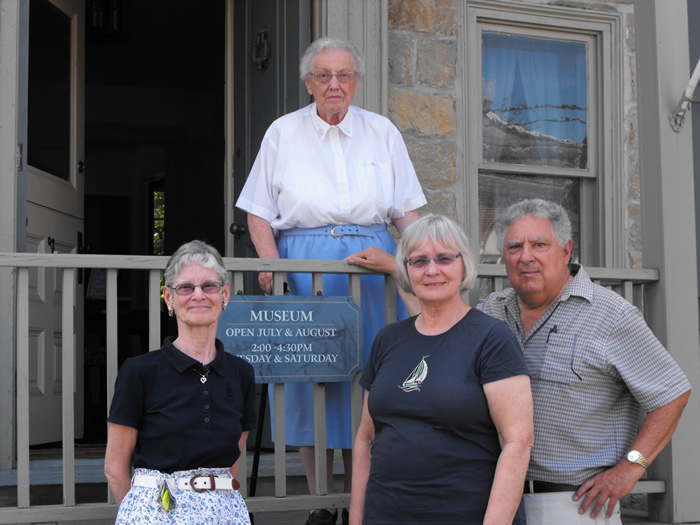
How much do you know about your local history? I confess that I don’t know much about mine. Or at least I didn’t until this summer, when my knowledge grew another inch and my interest a foot longer. At the urging of Maureen Cuddeback, who is the coordinator of the docents at the Warwick Historical Society, I was invited to take several guided tours. I chose to stick with one building – Baird’s Tavern.
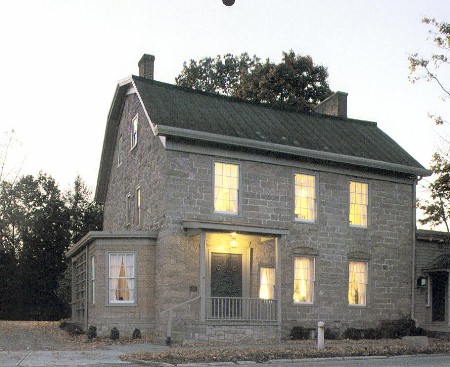 If it weren’t for these guided tours that are currently being offered twice a week during the summer months, on Tuesday and Saturday, from 2:00 – 4:30 p.m., I might still be in the dark. Not just because the tours have been illuminating, but because of the questions I would later pursue on my own, leading me to Warwick’s history on the Albert Wisner Library website, several books on the History of Warwick, The Historical Society Archives, and numerous searches on Google.
If it weren’t for these guided tours that are currently being offered twice a week during the summer months, on Tuesday and Saturday, from 2:00 – 4:30 p.m., I might still be in the dark. Not just because the tours have been illuminating, but because of the questions I would later pursue on my own, leading me to Warwick’s history on the Albert Wisner Library website, several books on the History of Warwick, The Historical Society Archives, and numerous searches on Google.
When Tony Houston, one of the docents who gave me a tour of Baird’s, introduced me to a candle in the tavern room, my curiosity was piqued. He said, “There was an entire industry built around this candle. You had the pedestals, the mirrors, trimmers, snuffers, candle boxes, etc. For many years this was the case. When the electric light came along, however, everything related to the candle went out the window.” Can you imagine the impact such change would have on society? The fear that it might have brought on, that your way of life, the industry on which you depended, was no longer there to serve your livelihood?
Today we see changes in our own ways of life, one business model supplanting another or businesses transforming themselves in order to survive. Farms offer wi-fi, bring in wine-bars, sell non-farm related items, entice you with organic coffee, make gourmet breakfasts, provide interesting events – or else they too become extinct. It’s not just enough to sell milk, eggs and a few farm vegetables these days. Studying history reminds us that change is ever constant.
Touring Baird’s Tavern with Executive Curator, Michael Bertolini, he explained. “From New York to Newburgh, Warwick made for a great overnight – if you were riding your own horse you could turn it in and get a fresh horse.” That helped me to understand why Baird’s was a thriving scene during the Revolutionary War era. It was an important strategic point of interest, even bringing George Washington to the Tavern in 1782, which is a documented fact and the reason for the yearly celebration given by the Society.
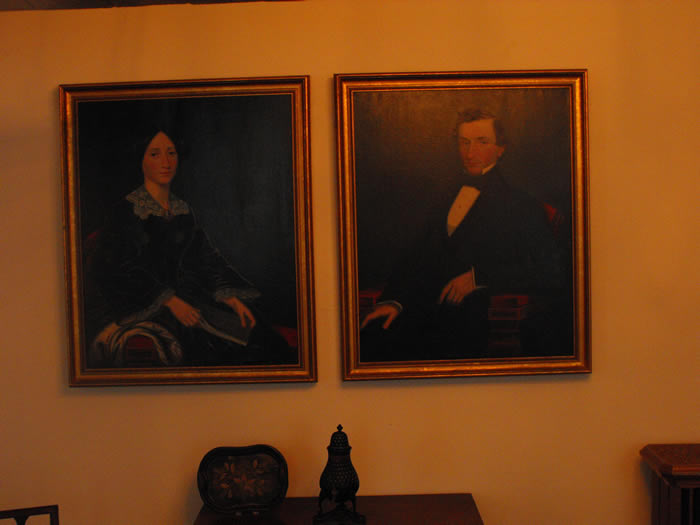 Taking me to the second floor of Baird’s, Michael went over various uses of the space and pieces from their current exhibition, Warwick's Gentry: The Way They Lived, 1740 – 1810, a display of antique furniture, portraits, and costumes. Talking to the docents, I learned a little more about the prominent individuals of Warwick’s community. Candy said, “Here we have the Welling Family, there’s Justice Dill, here are the Wheelers and that’s Samuel Ketchum. Asariah Ketchum was the architect of the Old Baptist Church and the Ketchum House.”
Taking me to the second floor of Baird’s, Michael went over various uses of the space and pieces from their current exhibition, Warwick's Gentry: The Way They Lived, 1740 – 1810, a display of antique furniture, portraits, and costumes. Talking to the docents, I learned a little more about the prominent individuals of Warwick’s community. Candy said, “Here we have the Welling Family, there’s Justice Dill, here are the Wheelers and that’s Samuel Ketchum. Asariah Ketchum was the architect of the Old Baptist Church and the Ketchum House.”
It was just enough information that would again spur my interest in search of more biographical detail, prompted by a series of questions that I continually ask myself: Who were these people, what were their aspirations, how did they feel about their lives, what tragedies befell them, what gave them happiness?
Tony explained, “These people were very politically active. During the Revolutionary War, were you going to go with the Revolutionaries or were you going to go with the Tories? You can understand – you’ve got 600 hundred acres – we’re doing very well with a nice house and a family - are you going to go with a bunch of nuts who are going to upset a given situation or are you going to try to preserve what you have?” Nothing like being brought to the edge of your seat!
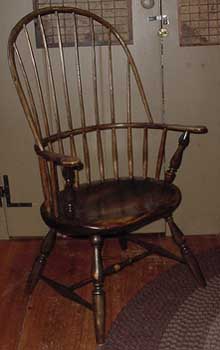 When touring the attic with Michael, I was shown a wide collection of chairs that dated back to the 1750s. I said, “these chairs must be worth some money, have you ever thought about having the Antiques Road Show appraise them?” Michael, who has spent his life in the antique business, responded that depending on the market, the chairs could fetch a pretty penny. Yet what did I know about chairs except that I liked to sit on them and would probably sell my chair if I was offered a good price? Not much, really, until Michael got me more interested.
When touring the attic with Michael, I was shown a wide collection of chairs that dated back to the 1750s. I said, “these chairs must be worth some money, have you ever thought about having the Antiques Road Show appraise them?” Michael, who has spent his life in the antique business, responded that depending on the market, the chairs could fetch a pretty penny. Yet what did I know about chairs except that I liked to sit on them and would probably sell my chair if I was offered a good price? Not much, really, until Michael got me more interested.
“The chairs were scaled to the person who had them made. This was General Hathorn’s chair – feel how lovely this feels,” as he took my hand and guided it over the contours. “You were measured from the knee to the floor to see what depth you needed. These chairs were custom made.” Then pointing out a Windsor Chair, he explained its practical utility: “it was an all purpose chair; it could be used indoors and outdoors, either in a formal room or bedroom; it’s light and comfortable and could be easily moved. You could add a cape or blanket on the back of the chair to block the draft.”
When Tony brought me into the attic, he brought my attention to the architecture. “Everything here is the way it was built in 1766 – the floorboards, the stone, the post, which go up and down, the pegs (no nails). It was put together by post and beam construction and held together with pegs. The roof, stone and floor – it’s all original.”
In 1766, fueled by unjust taxes, the rift between the American Colonies and Britain was growing, bringing us closer to the Revolutionary War. And that was the year Baird’s Tavern was born. I suddenly imagined the leaders of the time, curious as to what Ben Franklin was up to in 1766. I learned one thing he was doing: being examined before the House of Commons, providing his response against the Stamp Act. He was 60 years old. Thomas Jefferson was in the midst of pursuing a career in law and would start construction on Monticello two years later. George Washington was building up his estate at Mt.Vernon after years of playing the role of soldier.
When putting history in context, I found my interest growing in our local history. Historic artifacts and rooms, such as I viewed, were brought to life, transporting me backwards, exercising my imagination to impose my own reading on history and to write it from my own point of view.
Of course it doesn’t hurt to discover that your docent has family relations dating back to the time period. Tony’s direct descendants were responsible for the construction of the Tavern I was standing in. He explained, “Joseph Houston, who came from Scotland and preached in Virginia, came to Montgomery in 1739. His son Andrew was the first Houston who married a Wisner and John Wood Houston married a Baird. Julia Baird was one of my great grandmothers.” Then came another insight. “We didn’t invent locomotion or transit. It’s not just us who go to Maine or Florida; they went out west three or four generations ago, despite all of the difficulties of getting around.”
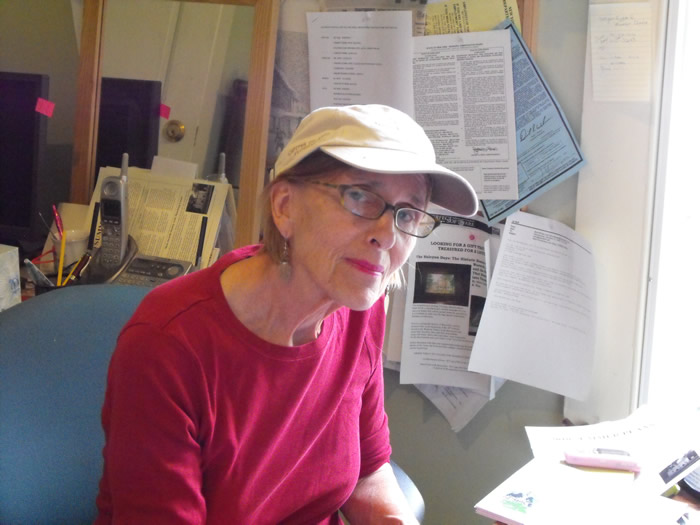 I enjoyed each of the tours I took at Baird’s Tavern, especially meeting all the special people responsible for making it happen. The Historical Society, under Director Jo Hull and President, Pat McConnell, have worked hard to make history a living, breathing subject, offering concerts, picnics, art appraisals, play readings and all kinds of other activities that engage people of all ages to get interested in history.
I enjoyed each of the tours I took at Baird’s Tavern, especially meeting all the special people responsible for making it happen. The Historical Society, under Director Jo Hull and President, Pat McConnell, have worked hard to make history a living, breathing subject, offering concerts, picnics, art appraisals, play readings and all kinds of other activities that engage people of all ages to get interested in history.
This year the Historical Society celebrates the bi-centennial of three buildings which have stood the test of time: the 1810 House, The Old Baptist Church and the Ketchum House. Their big fundraising event, The Under the Tent Party, takes place on August 28th, from 6 to 9 p.m., and serves to promote the preservation and restoration of these properties so that we can continue to enjoy, appreciate, and learn from them.
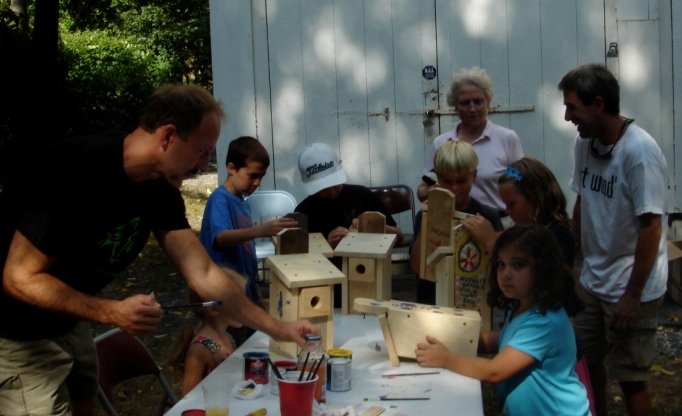
Excursions: Island Beach State Park
- Details
- Written by George L. Nitti George L. Nitti
- Category: Travel Travel

"Where can you go to the Jersey Shore, that when you turn to your left you see two people; to your right, five. Nowhere except Island Beach State Park." Kerryl
Although Kerryl and I spend a good portion of the summer in the Warwick Valley, in July and August, we like to hit the road and head down to the Jersey Shore for an occasional day trip. Our favorite destination is Island Beach State Park, located off of exit 82 on the Garden State Parkway, just 2 miles outside the boardwalk at Seaside Heights.
We go when we don’t have to compete with crowds and traffic, usually during the week, first checking the weather forecast to make sure there will be sunshine. After an hour of packing and some preliminary shopping - such as picking up the chips, water, etc. - we are on our way.
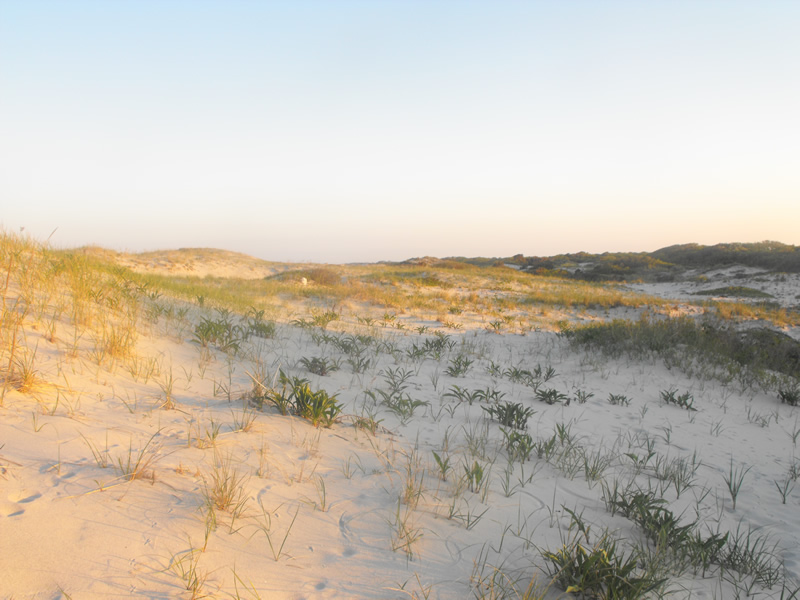 Kerryl introduced me to Island Beach State Park several years back and we have continued to visit regularly - always to the same spot. Its natural beauty is unparalleled, with approximately 10 miles of preserved shoreline, natural sanctuaries, rolling dunes, and tidal marshes. It's pristine and raw and that's a big reason why we love it so much. The beach is where we enjoy hanging out, playing with our two dogs, walking the shoreline, swimming and ocean surfing, being and meditating, combing the beach for seashells and other unexpected finds, reading, conversing, taking pictures....
Kerryl introduced me to Island Beach State Park several years back and we have continued to visit regularly - always to the same spot. Its natural beauty is unparalleled, with approximately 10 miles of preserved shoreline, natural sanctuaries, rolling dunes, and tidal marshes. It's pristine and raw and that's a big reason why we love it so much. The beach is where we enjoy hanging out, playing with our two dogs, walking the shoreline, swimming and ocean surfing, being and meditating, combing the beach for seashells and other unexpected finds, reading, conversing, taking pictures....
When you arrive to the park, the six dollar entry fee gets you in ($10 on weekends). Driving down a long strip, you will see two large visitor parking lots, which is a good place to settle down if you are interested in showering, concessions, lifeguards and other beachside amenities. Plus it's an easier walk to the beach. Should you pass that point, you are on your own.
Arriving to our spot, we unpack the car, and then head up the winding hot sandy path towards the beach, struggling with cooler, bags, beach chairs, and summer umbrella, an arduous workout not for the faint of heart. Sometimes I wonder whether I will actually make it to the beach without collapsing. Kerryl reminds me its good exercise. "No gain, without pain," and then I'm emboldened to carry on.
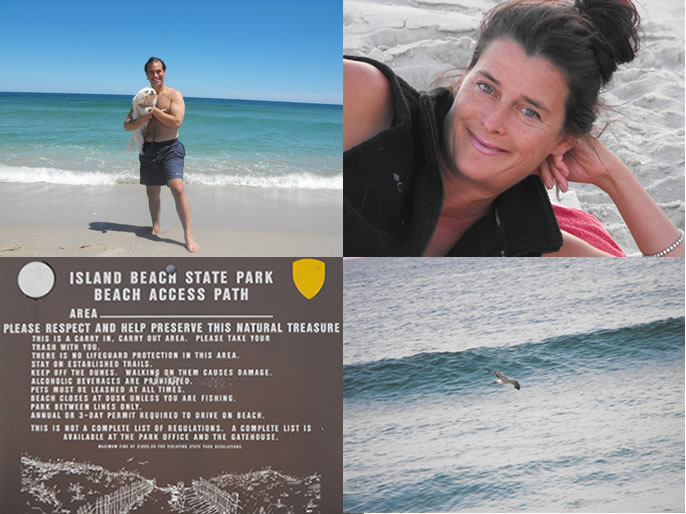
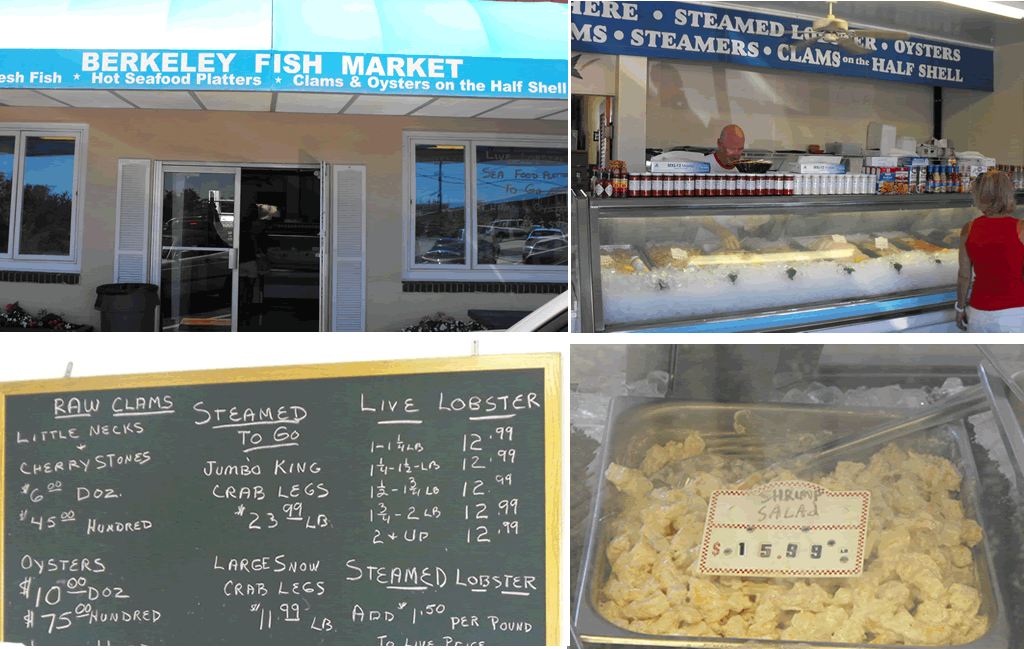
However, our journey does not begin and end at the beach. Before we enter the park, we must stop at the Berkeley Fish Market, which is located just outside the park entrance. Here we pick up several containers of homemade salad: Shrimp, chicken, and coleslaw. There is something in the mayo that makes these salads unforgettable. Nick, the owner, whose been in business for 48 years, won't give up his secret. With the large pieces of cut shrimp and lobster, the tender chicken, cut generously in square chunks, it's no wonder that his business thrives - not only enjoying the perfect spot, but the perfect array of product to keep the lines long during the summer months.
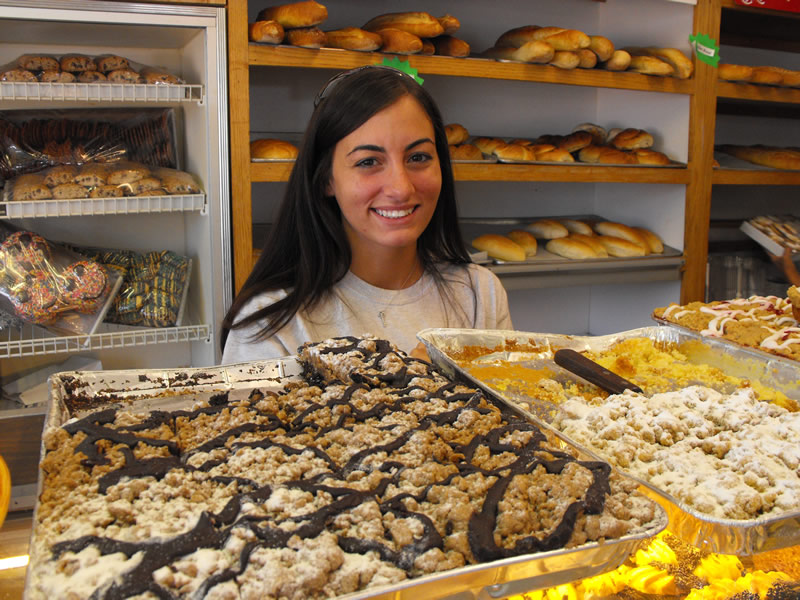
Two other places we frequently stop: Ebby's Cafe Alfresco, where you can get a cup of Starbucks coffee, a killer taylor ham and egg on a roll, an extra long hero loaded with meat, or any assortment of savory baked products. If we end up staying the night, I treat myself in the morning, where I look forward to reading the NY Times while relaxing at one of their outdoor tables.
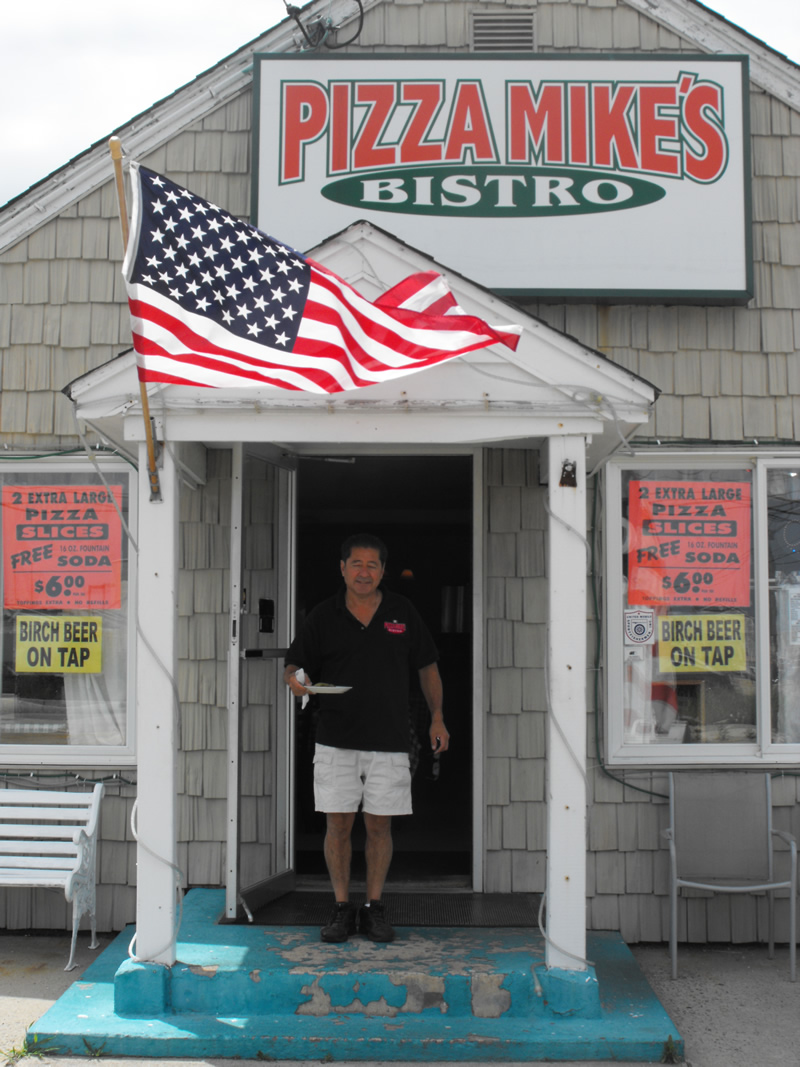 We also might stop at Pizza Mike's, almost directly across the street. We go because we like Mike, who shares lots of interesting stories and details of his life and how his business came to be. It was over a conversation with him that I learned more about a legendary long lost relative with the same last name as mine, who owned a popular restaurant named Top of the Mast. The restaurant bordered the park until it closed sometime in the last few years, where it's now a condo unit.
We also might stop at Pizza Mike's, almost directly across the street. We go because we like Mike, who shares lots of interesting stories and details of his life and how his business came to be. It was over a conversation with him that I learned more about a legendary long lost relative with the same last name as mine, who owned a popular restaurant named Top of the Mast. The restaurant bordered the park until it closed sometime in the last few years, where it's now a condo unit.
As the story goes, my thrice removed cousin Benny built up a great establishment, starting out as a hot dog vendor sometime in the mid 60's. Then the restaurant came into existence, where it flourished as a favorite destination through Benny's hard work. It brought in lots of money and had fabulous food. Benny even won the NJ lottery. But then all was lost when the IRS and Benny's penchant for womanizing ultimately did him in - both his riches and his restaurant. To my chagrin, I have found this story corroborated through discussions with other area residents and thus ends a saga in another family history, somehow marred by the fickle fate of fortune.
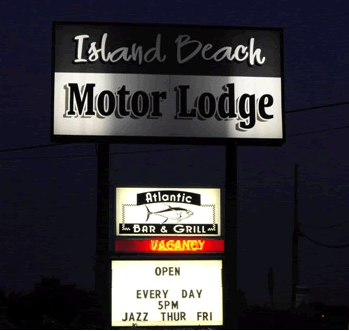 Fortunately there is the Island Beach State Motor Lodge which survives, located next to the old Top of the Mast. Kerryl and I have stayed on several occasions when we were either too tuckered out from a day at the shore to drive home or a special occasion - like a birthday. Room rates can be reasonable during the week. Located in the Motor Lodge is our favorite restaurant, the Atlantic Bar and Grill, which is a top shelf dining experience not to be overlooked on your excursion if you have any inkling for great food, ambiance, and service and are not too concerned about price. The restaurant looks right out over the ocean and you can be sure anything ordered on the menu is going to be par excellence. Sometimes we just have a drink at the bar, a Pina Colada with Dark Meyers Rum, to refresh us from a hot day on the beach, before we head home.
Fortunately there is the Island Beach State Motor Lodge which survives, located next to the old Top of the Mast. Kerryl and I have stayed on several occasions when we were either too tuckered out from a day at the shore to drive home or a special occasion - like a birthday. Room rates can be reasonable during the week. Located in the Motor Lodge is our favorite restaurant, the Atlantic Bar and Grill, which is a top shelf dining experience not to be overlooked on your excursion if you have any inkling for great food, ambiance, and service and are not too concerned about price. The restaurant looks right out over the ocean and you can be sure anything ordered on the menu is going to be par excellence. Sometimes we just have a drink at the bar, a Pina Colada with Dark Meyers Rum, to refresh us from a hot day on the beach, before we head home.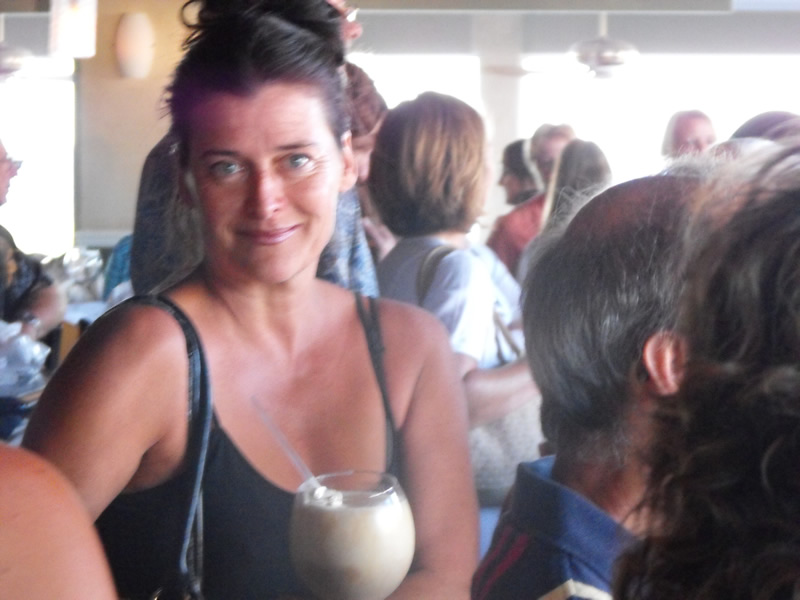
If we don't make it to the Motor Lodge for a night stay or a fine dining experience at the Atlantic Bar and Grill, we may head over to the boardwalk at Seaside Heights and stop at 3 Brothers Pizza where we pick up an oversized slice of pizza and a bucket of Idaho fresh cut fries, which are both unbeatable. Elsewhere on the boardwalk you can pick up a great sausage, peppers and onion sandwich.
I often have to remind myself that I'm still not too old for a little old fashioned fun and treats. When my girl tells me to pick up the fudge and taffy, I do what she says, making sure that before we leave the shore, our day is finally made complete with a little something sweet.
